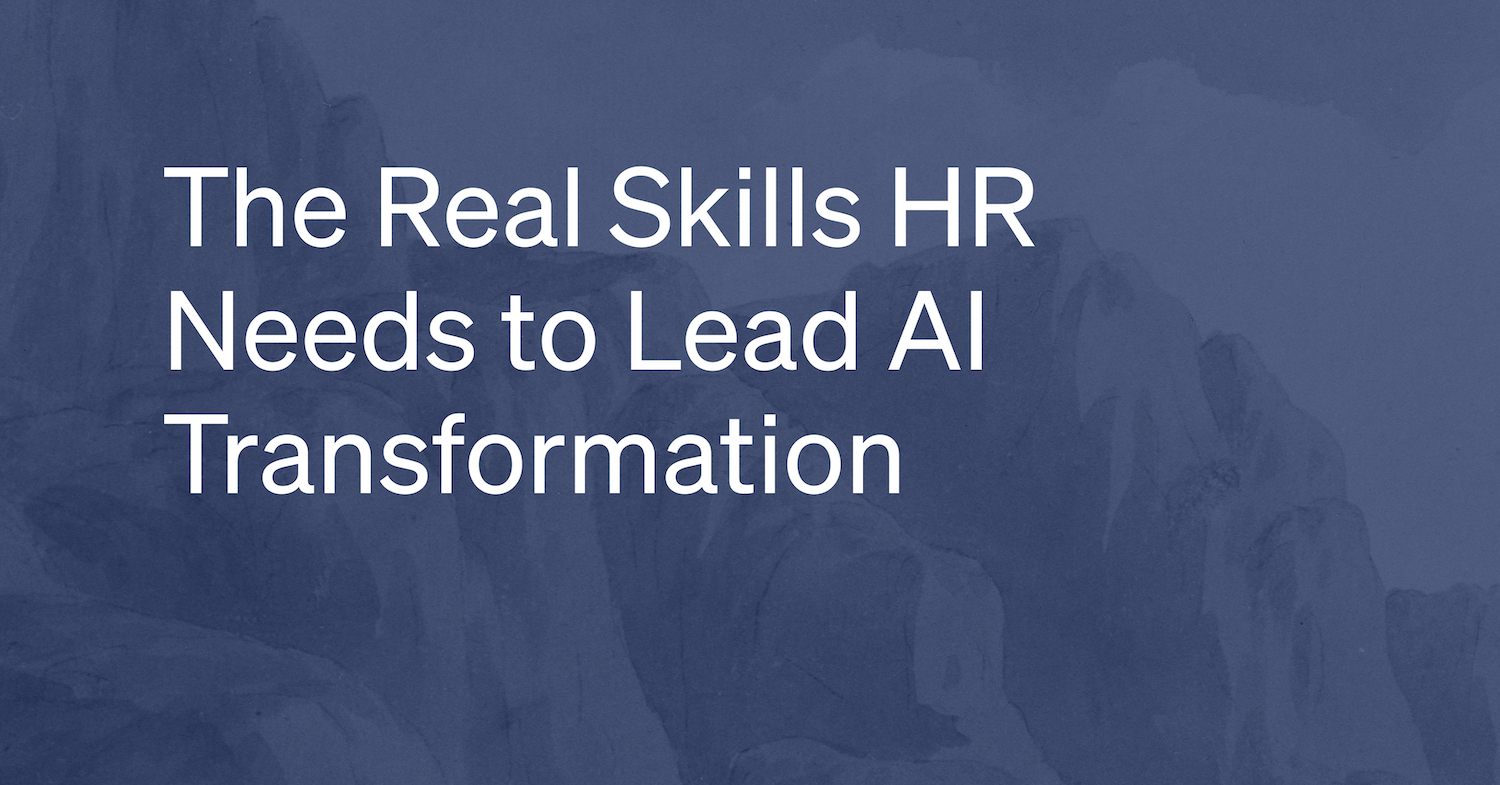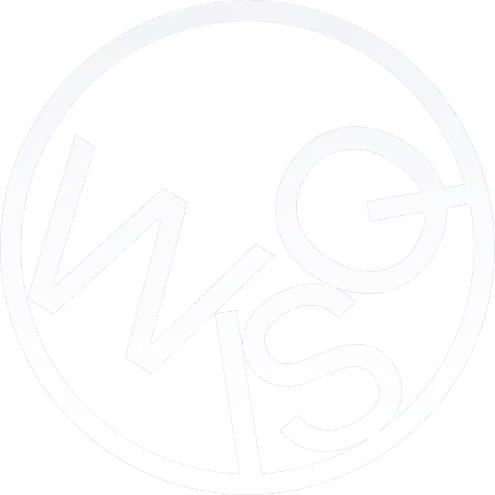The Human Element
The Real Skills HR Needs to Lead AI Transformation
The market leans too heavily into prompt engineering. Other skills are necessary for successfully working alongside/supervising AI agents: Cognitive skills, social/managerial skills, system thinking, etc. Recent studies back this up: OECD found that AI exposure increases demand for management, business process, and social skills.

As AI moves from experimentation to operational deployment, many HR teams are investing in prompt engineering as the essential skill of the moment. But prompting is only one layer of a much larger shift.
Prompting enables interaction, but not integration. It doesn’t equip teams to evaluate AI-generated guidance, align it to company policy, or govern it at scale. And it doesn’t prepare HR leaders to manage AI as part of a broader transformation in how work gets done.
To lead in an AI-powered enterprise, CHROs must build teams with a deeper capability set: systems thinking, domain fluency, process design, and strategic oversight. These are the skills that will determine whether AI in HR remains a tactical experiment or becomes a structural advantage.
Why Prompt Engineering Isn't the Whole Story
Prompt engineering is often positioned as the key to effective AI use. And while it's useful, it's fundamentally limited. A clever prompt can make an output look polished, but it can't guarantee that the answer is accurate, aligned to policy, or safe to act on. Prompting teaches users how to interface with AI, but not how to evaluate its recommendations, embed it into HR workflows, or ensure its outputs are aligned, accurate, and safe.
The distinction becomes critical as AI moves from isolated experiments to enterprise-wide deployment. HR agents are no longer generating one-off answers; they’re informing policy decisions, handling sensitive employee queries, and influencing outcomes at scale. At this level, the risks extend far beyond phrasing a bad prompt.
- Hallucinations: AI can misstate policies or fabricate guidance with unwarranted confidence.
- Misalignment: Outputs may be technically correct but tone-deaf to your culture or values.
- Domain drift: What worked yesterday can fail after a business or compliance shift.
- Edge cases: Atypical scenarios can break otherwise functional patterns, yielding incomplete or risky responses.
The real risk isn’t just poor answers—it’s misplaced confidence. Many organizations are channeling their early AI training efforts into prompt engineering, which is useful, but narrow. It positions HR teams as users of AI tools, not as supervisors, integrators, or strategists who can guide how the AI gets embedded into their work.
That's where the conversation needs to go next: toward the broader skill domains that make AI effective at scale.
What the Data Shows: Skills In Demand Under AI Exposure
The good news is we don't have to guess at which skills matter most alongside AI adoption — the data is already pointing the way. The Organisation for Economic Co-operation and Development (OECD) recently looked at job postings in occupations most exposed to AI. What stood out wasn't a surge in technical skills; 72% of vacancies asked for management skills, and 67% asked for business process skills. In other words, the more AI touches a role, the more organizations lean on people who can design processes, manage resources, and keep operations aligned. Human oversight becomes even more valuable.
McKinsey's Superagency study came to a similar conclusion: Most firms aren't struggling with technical adoption — they're struggling with leadership. McKinsey found that employees are experimenting with AI faster than leaders can set guardrails, create adoption strategies, or weave AI into everyday workflows.
And across industries, further research finds that AI often raises demand for complementary human skills like teamwork, resilience, and judgment rather than replacing them outright. HR is no exception; postings for AI-related HR roles have nearly tripled since 2019, and they commonly overlap with project management, HRIS analyst, and HRBP roles — those that require more advanced human and leadership skills. And the people who fill these roles are increasingly expected to guide AI integration, not just use AI tools.
The implication is clear: AI isn’t replacing human skills—it’s amplifying the need for the right ones. The future of HR belongs to those who can translate organizational complexity into systems AI can operate within—then steward those systems with sound judgment.
The AI-HR Skills Stack
For HR to move from AI experimentation to enterprise-scale impact, scattered skills aren’t enough. What’s needed is a structured capability stack—one that builds from baseline fluency to systems integration to executive oversight.
This framework gives HR leaders a clear roadmap: what foundational skills every practitioner needs, what enabling competencies make AI reliable inside workflows, and what strategic capabilities are required to lead and govern AI at scale.
The stack has three tiers that together form a progression HR leaders can use to assess, build, and govern AI readiness in their organizations.
1. Foundational Skills
These are the minimum viable capabilities for any HR team working alongside AI agents. They include:
- Digital and AI literacy: HR doesn’t need machine learning engineers—but it does need professionals who understand model behavior, failure modes, and how training data shapes risk. This baseline literacy protects teams from overtrusting AI or misinterpreting outputs.
- Contextual and domain judgment: HR is a domain steeped in nuance: Policies vary across jurisdictions, organizational cultures are unique, and the "right" answer often depends on subtle context. AI can surface an answer, but it takes human HR expertise to judge whether that answer is correct, appropriate, compliant, and aligned with company values.
- Data literacy and metrics fluency: Outputs alone don’t tell the whole story. HR teams must interpret AI performance metrics, detect drift, and understand how agent behavior evolves over time.
2. Enabling Skills
Once the basics are in place, the next layer helps AI actually work reliably inside HR systems and workflows. These skills include:
- Systems thinking and process design: AI doesn’t add value in isolation. HR needs professionals who can embed it into workflows—connecting inputs, outputs, and oversight across functions.
- AI prompt and chain-of-thought engineering: Prompting isn't the whole story, but it is still part of it. The difference is that in this layer, prompts are seen as building blocks inside larger systems. It's not about writing one clever query; it's about designing structured interactions that lead to repeatable, reliable outcomes.
- Risk awareness and bias sensitivity: AI can replicate or amplify bias if left unchecked. HR must be equipped to spot inequities, challenge outputs, and escalate uncertainty to humans.
3. Strategic and Oversight Skills
The top tier is where HR shifts from users of AI to stewards of it, responsible for scale, governance, and leadership. Necessary skills for this layer include:
- AI governance and compliance: Scaling AI requires more than access; it demands trust. HR leaders must set guardrails, define escalation paths, and communicate standards clearly across the organization.
- Performance coaching and human oversight: HR leaders need to know when to keep a human in the loop.
- Change management and adoption strategy: AI transformation is as much cultural as it is technical. HR must drive alignment across teams, prepare the workforce for new workflows, and sustain momentum through clear communication and intentional change leadership.
- Cross-functional orchestration: AI cuts across the enterprise. HR leaders must partner with Legal, IT, Ops, and Finance to ensure AI initiatives are coordinated, compliant, and strategically aligned.
Taken together, this skills stack shifts HR from chasing clever prompts to building durable, sustainable agentic AI capabilities. Instead of focusing simply on how to talk to AI models, this framework gives HR leaders a roadmap for integrating, overseeing, and leading with AI.
From Prompting To Practice
Prompting will always be part of the toolkit, but it's only the beginning. The real opportunity for HR lies in building a broader, more comprehensive skills stack that helps them integrate AI into processes, manage its outputs, govern its use, and evolve alongside it.
That means resisting the temptation to focus too much time and attention on prompt engineering. Instead, invest in developing the cognitive, social, and oversight capabilities that will help your HR leaders govern AI, not just query it.
Wisq’s Agentic HR Platform is built to amplify the teams that are ready for this shift. If you’re charting your path to AI deployment, we’ll meet you there, with technology designed to scale, and a partner that understands the capabilities required to lead.
Talk to our team about building your AI-enabled HR function.
Related

AI is reshaping HR, helping teams automate tasks, scale support, and focus on strategic work. In a conversation with From Day One, Wisq CEO Jim Barnett shares how AI teammates like Harper are changing the HR service model and what leaders can do to stay ahead.







